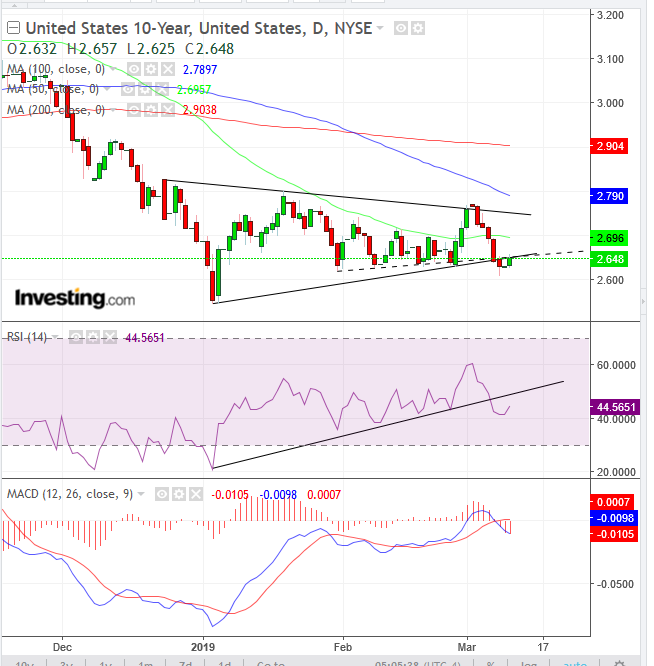10-Year Treasury yields rose for the first time in more than a week today, up two basis points to 2.65 percent. The boost came as investors sold off Treasurys after Fed Chair Jerome Powell said in an interview yesterday on CBS’ 60 Minutes that the central bank considers the current interest rate “appropriate” and “roughly neutral”—thereby presumably in sync with inflation, neither boosting the economy nor slowing it down—and isn't in any hurry to change its interest rate policy.
This further strengthens the case we have been making since the Fed's January statement that it will be "patient" in January. Contrary to the market's interpretation, the Fed hasn't changed its policy, which saw four interest rate hikes last year. It is “patient,” but only in terms of letting the dust settle after the government shutdown and data interruption, not necessarily “patient” with raising interest rates as a policy.
Meanwhile, traders have sold off Treasurys, letting yields rise. However, yields may have already completed a symmetrical triangle, bearish in a downtrend. The fact is that after slightly penetrating above the pattern’s lower boundary, yields have retreated back below it, demonstrating a wall of Treasury demand, forming resistance.
Note the resistance of the lows since February (dotted line). Yields would have to overcome this to get back into the pattern.
The pattern formed after the rate fell below both the 100 and 200 DMAs. Then, the 50 DMA fell below the 200 DMA, triggering the Death Cross. Afterward, the 100 DMA also fell below the 200 DMA. Since then it is realigning with the upper boundary of the pattern. Finally, the rate fell below the 50 DMA, with the emergence of the pattern.
Another two glaring signals were triggered by the RSI and MACD. Despite today’s rebound, they remain within bearish conditions. The RSI is still below its uptrend line since the beginning of the year, and the MACD’s shorter MA was unable to cross back above the longer MA, demonstrating the overall rate is still very much down.
If yields follow through with this bearish dynamic, it would happen as investors increase their Treasury holdings, presumably as they sell off equities to protect themselves from a stock market decline, even as they trigger it themselves.
